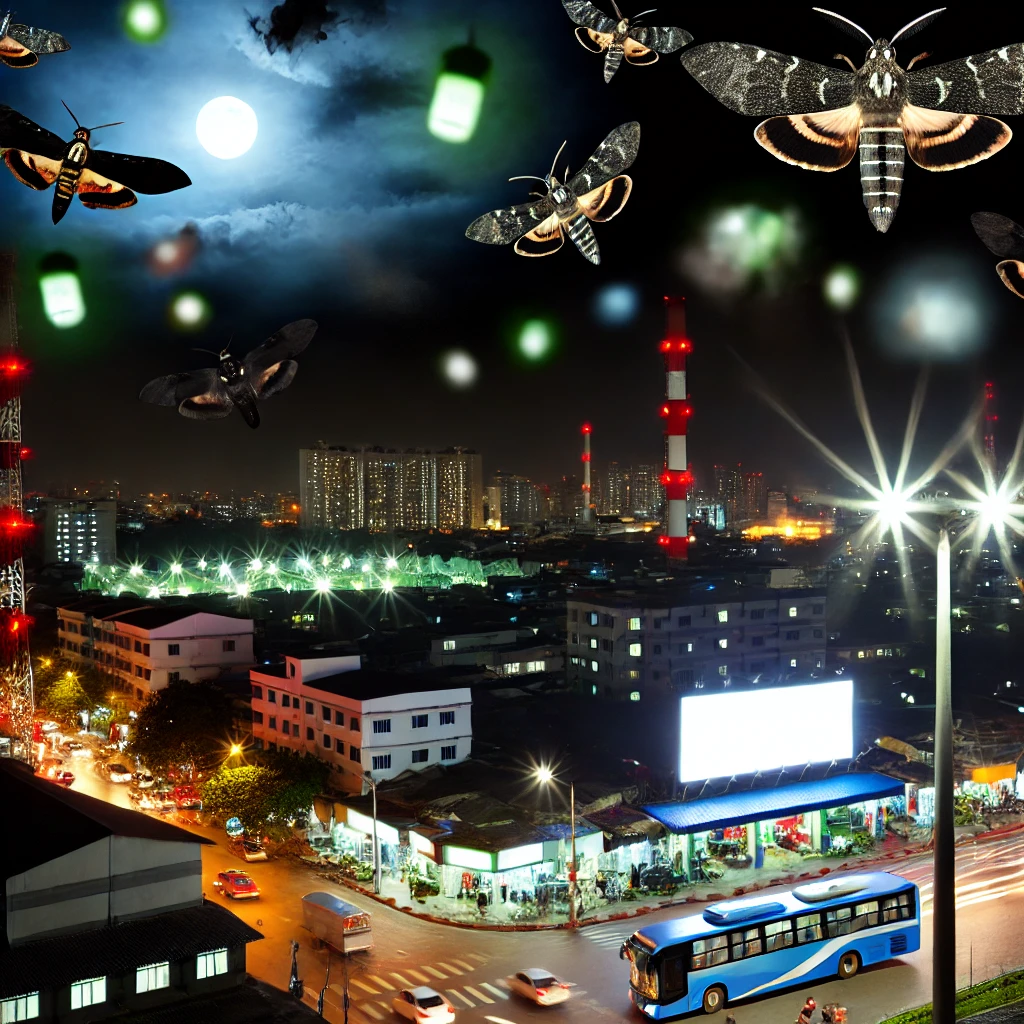
Introduction
Light pollution, the excessive or misdirected artificial light in urban and rural environments, affects many aspects of ecological systems. Nocturnal pests, including insects and rodents, are particularly sensitive to changes in light levels. The impact of light pollution on these pests can have significant consequences for ecosystems, agriculture, and public health. Understanding these effects is crucial for developing effective pest management strategies.
Effects on Nocturnal Pests
- Disruption of Natural Behaviors: Light pollution alters the natural behaviors of nocturnal pests. Many insects rely on natural light cues for navigation, mating, and foraging. Artificial light can confuse these behaviors, leading to increased activity near light sources and disruption of their life cycles. For example, moths, which use moonlight for navigation, are drawn to artificial lights, affecting their reproductive patterns and survival rates.
- Increased Pest Populations: The attraction of nocturnal pests to artificial lights can result in higher local pest populations. Areas with significant light pollution may experience increased pest densities as insects congregate around light sources, potentially leading to larger infestations in surrounding areas. This concentration of pests can have cascading effects on local ecosystems, including the disruption of predator-prey relationships.
- Impact on Pollination: Many nocturnal insects play crucial roles in pollination. The attraction of these insects to artificial lights can reduce their availability for natural pollination activities. As a result, plant species that depend on nocturnal pollinators may suffer reduced reproduction rates, impacting ecosystem health and agricultural productivity.
- Health and Economic Implications: The increased presence of nocturnal pests due to light pollution can have direct health and economic impacts. Insects such as mosquitoes, which are often attracted to artificial lights, can increase the risk of vector-borne diseases. Additionally, the increased presence of pests can lead to higher costs for pest control and management, affecting both residential and commercial environments.
Challenges and Considerations
- Complex Interactions: The interactions between light pollution and nocturnal pests are complex and multifaceted. Different pest species may respond differently to light pollution, making it challenging to predict overall impacts. Research is needed to understand these interactions and develop targeted strategies for managing pest populations affected by light pollution.
- Technological Solutions: Addressing the impact of light pollution on nocturnal pests may require innovative technological solutions. Strategies such as using lighting that minimizes attraction to pests or implementing light shielding to reduce light spill can help mitigate the effects. However, balancing these solutions with the need for functional and aesthetically pleasing lighting in urban areas can be challenging.
- Regulatory Measures: Regulatory measures and guidelines to control light pollution are essential for mitigating its impact on nocturnal pests. Implementing standards for outdoor lighting, promoting the use of energy-efficient and pest-friendly lighting technologies, and encouraging public awareness can help address light pollution issues.
- Public Awareness and Education: Raising public awareness about the effects of light pollution on nocturnal pests is crucial. Educating communities about the importance of reducing light pollution and encouraging practices such as turning off unnecessary lights can contribute to reducing its impact on pest dynamics and overall ecological health.
Future Directions
- Research on Specific Pest Responses: Further research is needed to understand how different nocturnal pest species respond to light pollution. Studies focusing on specific behaviors, population dynamics, and ecological impacts will provide valuable insights for developing targeted pest management strategies.
- Development of Light Pollution Mitigation Technologies: Innovations in lighting technology, such as spectrum-specific lights and advanced shielding techniques, can help reduce the attraction of nocturnal pests. Ongoing advancements in these technologies will be essential for addressing the challenges posed by light pollution.
- Integration with Broader Pest Management Strategies: Integrating light pollution mitigation with broader pest management strategies will enhance overall effectiveness. Combining light management with other control measures, such as biological control and habitat management, will provide a more comprehensive approach to managing nocturnal pests.
- Global Collaboration and Policy Development: Collaborative efforts at the global level are necessary to address the issue of light pollution and its impact on nocturnal pests. Developing international guidelines and policies for light pollution control, as well as sharing best practices and research findings, will support effective management strategies.
Conclusion
Light pollution has significant impacts on nocturnal pest dynamics, affecting their behavior, population levels, and ecological roles.

